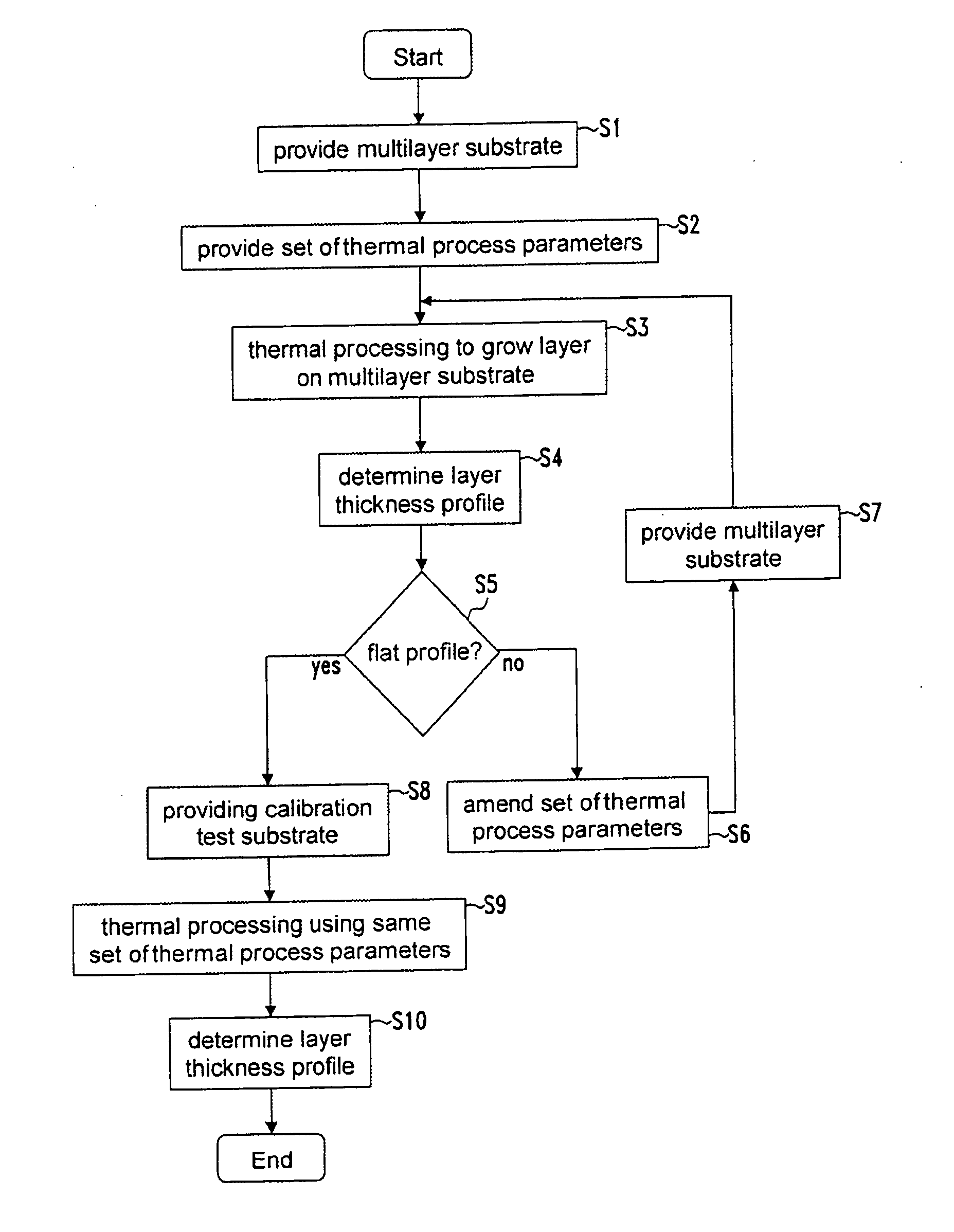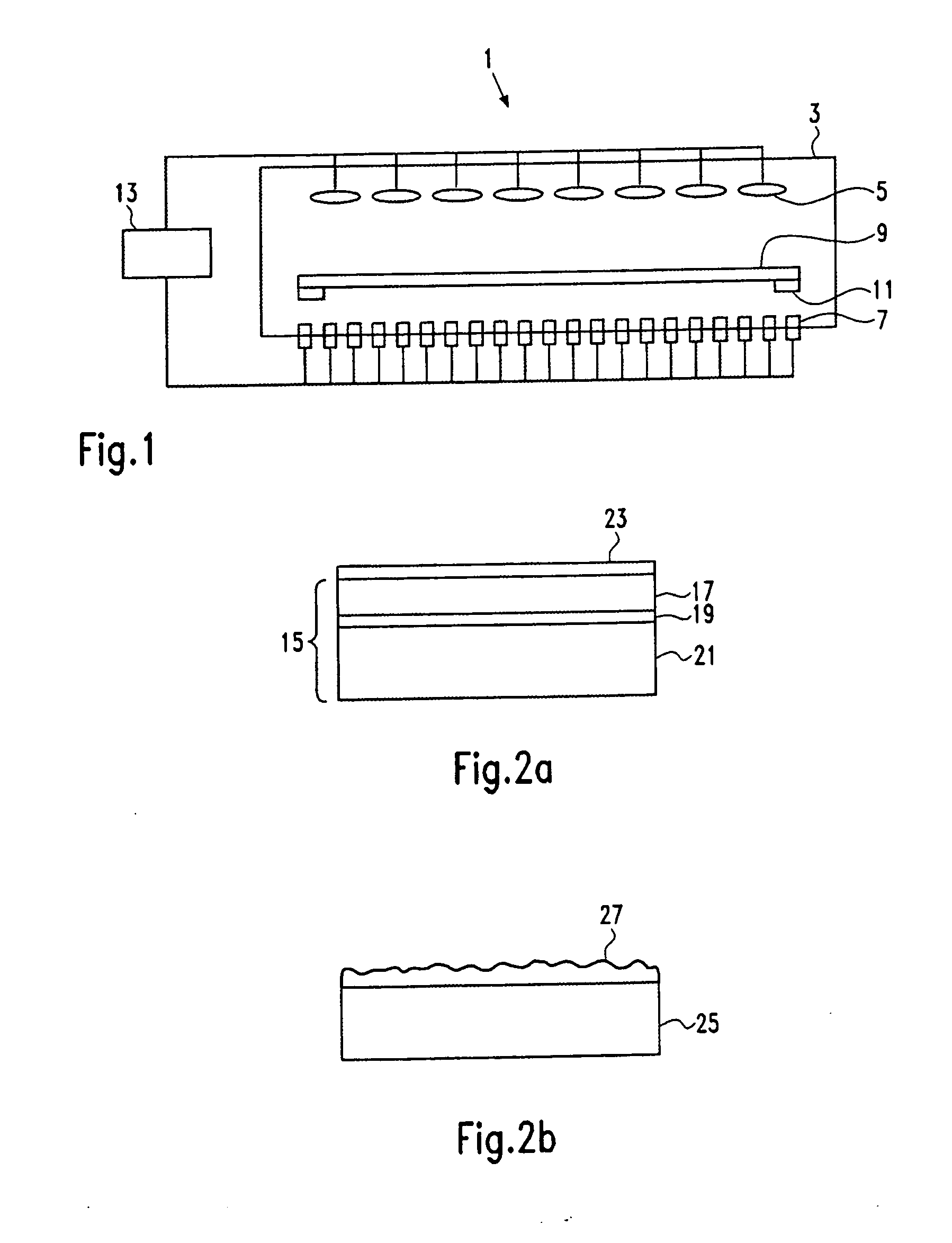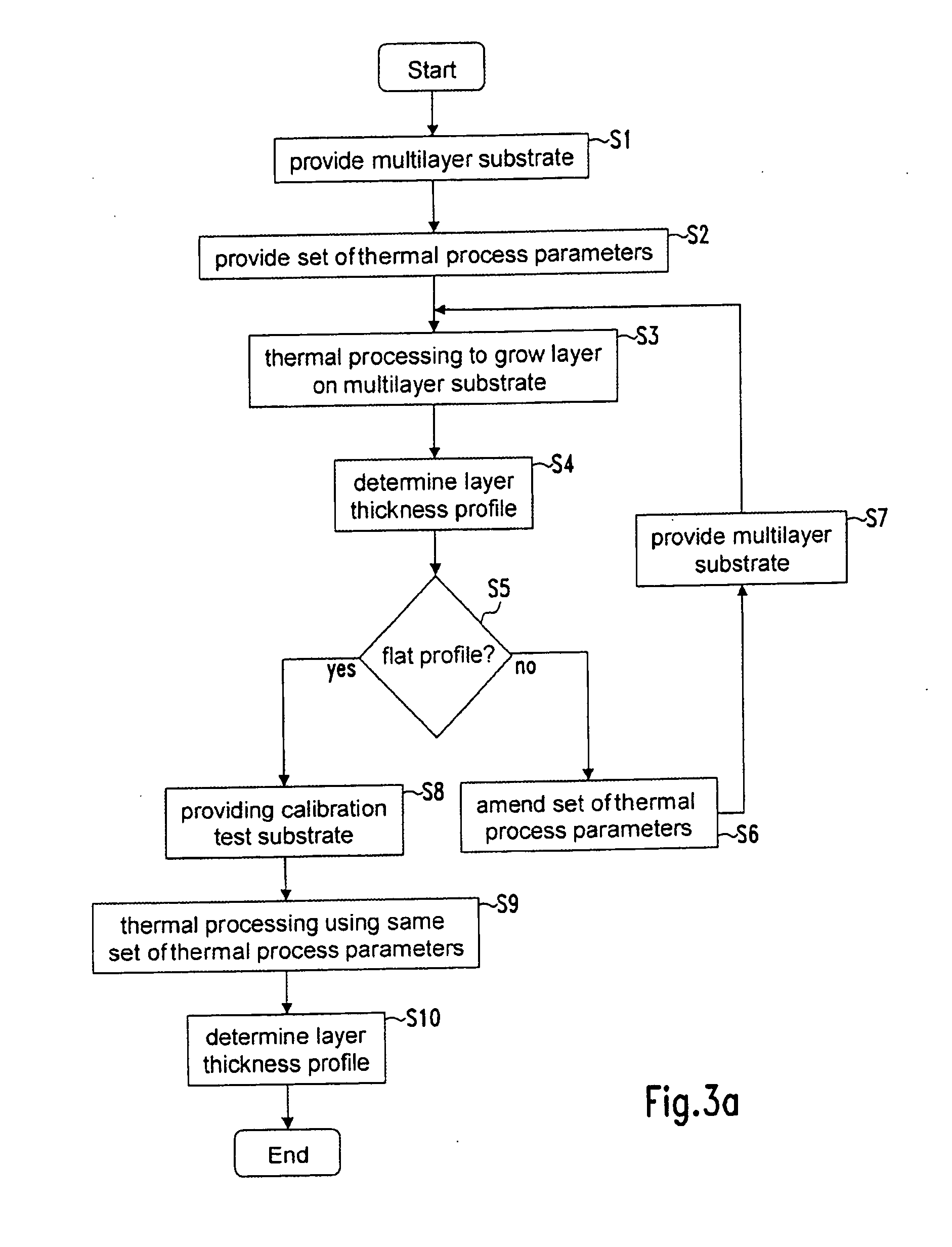Thermal processing equipment calibration method
a technology of thermal processing equipment and calibration method, which is applied in the direction of heat measurement, semiconductor/solid-state device testing/measurement, instruments, etc., can solve the problems of inability to achieve direct calibration of thermal processing equipment, inapplicability to multi-layer type substrates, and the need for expensive soi wafers to be scrapped, so as to achieve easy operation, reduce slip lines, and reduce the effect of wafer deformation
- Summary
- Abstract
- Description
- Claims
- Application Information
AI Technical Summary
Benefits of technology
Problems solved by technology
Method used
Image
Examples
Embodiment Construction
[0025] The terms “test substrates” and “calibration test substrates” refer to substrates with the same structure, except that a calibration test substrate is a test substrate that has been used for calibrating a heating device. During calibration of a heating device, the predetermined thickness profile (golden profile) of the calibration layer is formed on the calibration test substrate using the same thermal process parameters which, when used for processing multilayer substrates, produces multilayer substrates with an even thickness profile, or alternatively a multilayer substrate with reduced, in particular nearly no or no, slip lines and / or reduced wafer deformations. The term “thermal process parameters” relates to any controllable parameter of the equipment that influences the heat profile in the equipment.
[0026] According to a preferred embodiment, the set of thermal process parameters used to process a test substrate correspond to a set of predetermined thermal process para...
PUM
 Login to View More
Login to View More Abstract
Description
Claims
Application Information
 Login to View More
Login to View More - R&D
- Intellectual Property
- Life Sciences
- Materials
- Tech Scout
- Unparalleled Data Quality
- Higher Quality Content
- 60% Fewer Hallucinations
Browse by: Latest US Patents, China's latest patents, Technical Efficacy Thesaurus, Application Domain, Technology Topic, Popular Technical Reports.
© 2025 PatSnap. All rights reserved.Legal|Privacy policy|Modern Slavery Act Transparency Statement|Sitemap|About US| Contact US: help@patsnap.com



